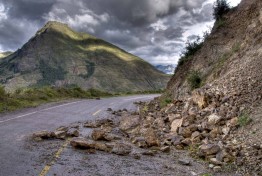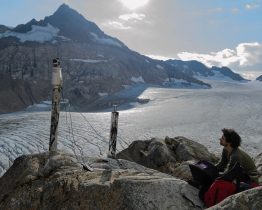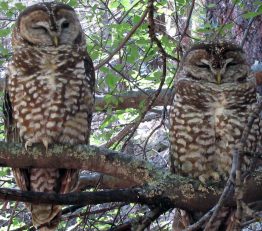UW Environment is pleased to announce that Dan Brown will be joining the University of Washington as the new director of the School of Environmental and Forest Sciences, effective January 1, 2018. As director, Dan will play a vital role in guiding the School’s academic growth and developing new initiatives, providing leadership and management of its programs, centers, and research grants, allocating its revenues in a manner that supports its mission, and enhancing its sizable and growing endowment.
Read more »50 simulations show how a 9.0 Cascadia earthquake could play out
We know the "really big one" is coming. But what exactly is going to happen in cities along the coast?
Read more at UW Today »Mountain glaciers shrinking across the West
Until recently, glaciers in the United States have been measured in two ways: placing stakes in the snow, as federal scientists have done each year since 1957 at South Cascade Glacier in Washington state; or tracking glacier area using photographs from airplanes and satellites. We now have a third, much more powerful tool. While he was a doctoral student in University of Washington’s Department of Earth and Space Sciences, David Shean devised new ways to use high-resolution satellite images to track elevation changes for massive ice sheets in Antarctica and Greenland.
Read more at UW Today »New faculty and recent faculty promotions at UW Environment (2017-2018)
New faculty at UW Environment Sixteen outstanding new faculty members with a wide range of experiences and expertise have recently started or will soon start at UW’s College of the Environment. The College community — its undergraduate and graduate students, faculty and staff — will benefit immensely from their contributions during the 2017-2018 academic year and beyond. The College’s impressive group of scientists and researchers now includes: Andrew Berdahl, assistant professor, Aquatic and Fishery Sciences Edward Blanchard, research assistant professor, Atmospheric Sciences Greg Bratman, assistant professor, Environmental and Forest Sciences Randelle (Randie) Bundy, assistant professor, Oceanography Shuyi Chen, professor, Atmospheric Sciences Sarah Converse, associate professor, Environmental and Forest Sciences and Aquatic and Fishery Sciences T.J.
Read more »Study points to win-win for spotted owls and forest management
Remote sensing technology has detected what could be a win for both spotted owls and forestry management, according to a study led by the University of California, Davis, the USDA Forest Service Pacific Southwest Research Station and the University of Washington. For 25 years, many forests in the western United States have been managed to protect habitat for endangered and threatened spotted owls.
Read more at UW Today »





